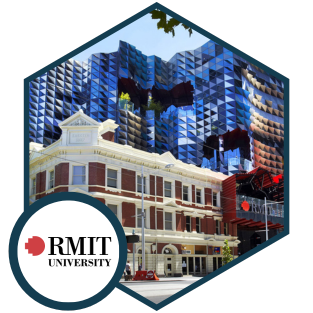Summary
With a focus on giving everyone a chance to “be their best, shape their future, and belong,” this renowned institution creates programs that prepare students for the rapidly evolving workforce. It all began in 1887 when university founder Francis Ormond had a vision of creating a practical place for learning that helped workers acquire real-world skills.
Today, educators at RMIT still lead with that vision now on a global scale. Keep reading to see how partnering with Canvas has enabled this forward-thinking institution to scale online learning and stay ahead of the curve amid the societal disruption caused by the recent pandemic.
Key Insights
RMIT leaned on Canvas during its rapid transition to online learning when the COVID-19 travel ban prevented international students from traveling to campus.
The institution saw a 1,500% increase in student participation in synchronous sessions throughout the transition to fully online learning in 2020.
As a commercial open-source platform, Canvas has enabled RMIT to expand its education ecosystem with integrations that support its institutional initiatives, such as formative assessment and content authoring.
The Challenge
As a renowned research institution in pursuit of supporting students globally, RMIT needed a strategic partner that could grow with them, allowing them to scale their online learning initiatives. This need inspired RMIT’s switch to the Canvas learning management system (LMS) in 2018 from Blackboard due to the latter platform’s limited connectivity and aging technology. In the process of switching to Canvas, RMIT began “Project Rewire,” a rapid migration and adoption plan aimed at removing technology barriers and increasing teacher and student engagement.
The good news? The rollout plan was rapid but still provided both students and educators with opportunities to provide their feedback, engage in professional development, and uplift courses throughout the implementation process. The bad news? Two years later, the COVID-19 pandemic struck, and educators were rushed to pivot, respond with inclusion, and deploy new systems.
RMIT faculty quickly adapted to online learning when the travel ban prevented international students from traveling to campus. To meet the needs of students and faculty during this transition, RMIT rapidly built online learning standards and guidelines, provided scaffolded professional development, and looked to its existing learning technology and partners to support this response. The aim was to offer flexible and engaging online courses and implement a rigorous QA process for a consistent teaching and learning experience in every instance.

In response to the COVID-19 pandemic, Canvas was our first go-to. We have a strategic relationship with Instructure. Our Canvas representative spends so much time with us that he actually feels like part of our team.
Tass Katsoulidis
Director, Learning & Teaching Solutions
The Solution
Tass Katsoulidis expressed that the institution uses Canvas today as the “spine for all digital teaching and learning” and has taken a responsive online learning approach. With a focus on getting the right systems in place and establishing a robust pedagogy framework, RMIT has used Canvas to build a foundation where online learning in all its forms can continue long after the pandemic is over.
The institution’s main driver to expand online learning was to respond to the pandemic, apply inclusion principles, and improve the digital learning experience. In recent surveys, students at RMIT noted inconsistencies in the use of Canvas from course to course and expressed the need for the ability to learn on the go in a consistent and user-friendly form as education continues to change.
To ensure both faculty and students were set up for success, RMIT took a phased approach to respond to the pandemic and pivot to online learning.
- Phase 1: Provide flexibility and inclusion for learners
With instructional guardrails in place to create consistency in courses, educators could experiment with new integrations to accommodate interactive activities outside of the Classroom to provide a more inclusive environment for students impacted by the travel ban. - Phase 2: Provide continuity for our learners
Using Canvas, RMIT has scaled professional development for educators while driving fully-online learning and engagement for our students.

Over the next five years, we want to be very clear on our strategy, continue expanding our Canvas system through third-party integrations, and remain open to change.
Tass Katsoulidis
Director, Learning & Teaching Solutions
The Results
Since RMIT has doubled down on online learning and consistent Canvas usage, they've seen a significant increase in student engagement. Between March 2020 and August 2020 alone, the institution saw a 1,500% increase in online student participation.
To further engagement in virtual settings and provide opportunities for connection, RMIT students use Canvas Studio to record and view interactive video content. Since the transition to fully online learning, Studio usage has increased 107% among students.
In addition to enhancing the student experience, Canvas has provided educators at RMIT with an opportunity to rethink their pedagogical practices. RMIT has expanded its assessment strategy with a focus on distributing authentic, formative assessments that drive learning, rather than the high-stakes, in-person assessments that were previously distributed.
Moving forward, RMIT has goals of expanding its content authoring and interactive learning capabilities and would like to move away from in-person high-stakes examinations and face-to-face lectures altogether, replacing both with a robust physical and digital education ecosystem.
RMIT’s passion for online learning is matched with its willingness to innovate and adapt at both the program and school level. With a strategy-first approach, RMIT has a real desire to continue pushing the boundaries technologically and pedagogically while maintaining its commitment to course quality and meeting student needs globally.

Download Case Study
